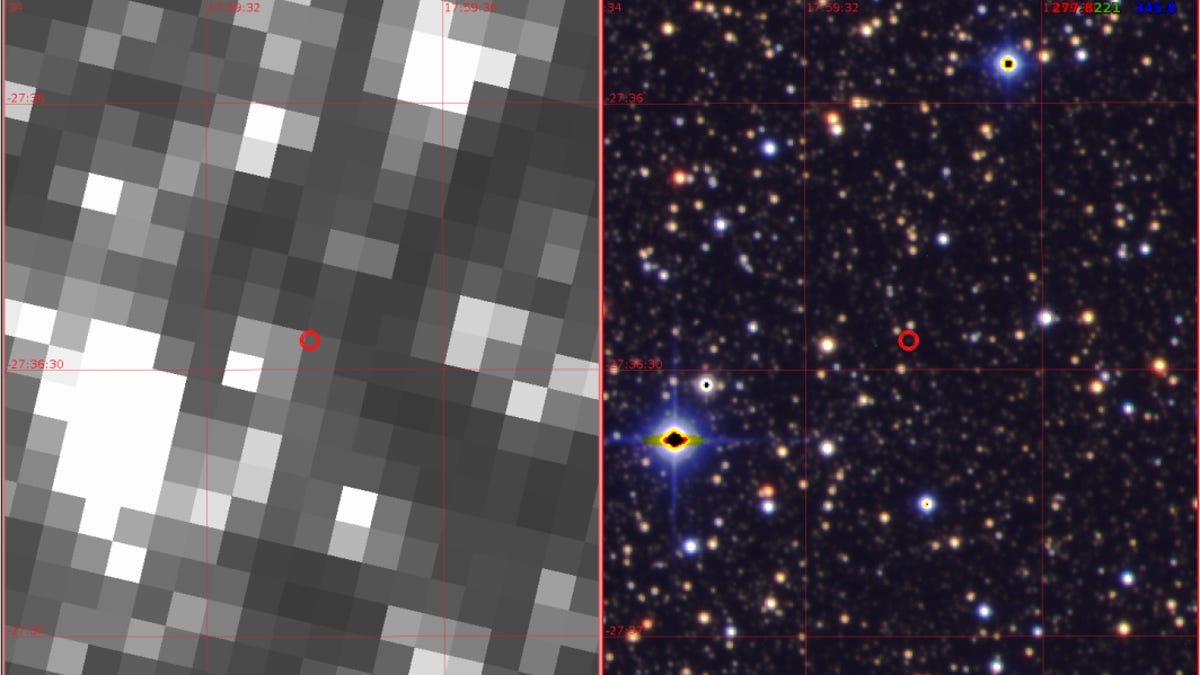Kepler Telescope Coughs Up Distant Second 'Jupiter' Despite Retirement
Scientists got all MacGyver on data picked up six years ago and 17,000 light-years away.

The view of the region in space where the Jupiter-like planet was found.
Scientists have discovered a distant planet similar to Jupiter using data taken from the retired Kepler space telescope in 2016.
The planet, called K2-2016-BLG-0005Lb, is one of the farthest exoplanets scientists have yet discovered, at 17,000 light-years away. Scientists used a technique called microlensing, which identifies exoplanets by the way their gravitational fields affect the brightness of stars they revolve around.
K2-2016-BLG-0005Lb appears to be the same mass, size and distance from its own sun as Jupiter is from ours. For reference, gas giant Jupiter is the fifth planet in the solar system and has over twice the mass of all its neighboring planets combined.
"This discovery was made using a space telescope that was not designed for microlensing observations and, in many ways, is highly sub-optimal for such science," the scientists, led by Ph.D. student David Specht from the University of Manchester, wrote in a paper on the find.
The data responsible for the discovery of the far-off planet was taken two years before the Kepler telescope finally ran out of fuel. Specht used newly discovered algorithms to search through the Kepler files for suitable candidates.
Kepler launched in 2009 with the goal of discovering Earth-sized planets orbiting distant stars, and not gas giants. The mission was plagued by problems, however, including losing half of the reaction wheels needed for turning the craft by 2013. Yet before it was finally retired in 2018, Kepler managed to examine over 530,000 stars and discover 2,327 exoplanets.
This is not the first discovery made after the retirement of the telescope. In 2020, NASA scientists used Kepler data to uncover a "second Earth," called Kepler-1649c, located a relatively short 300 light-years away.
Last year, scientists controversially reported they'd discovered an "extroplanet" located outside of the Milky Way for the first time, using X-rays, at 28,000 light-years from Earth. But even those scientists themselves declined to call it a planet, saying only that it fit the model.

